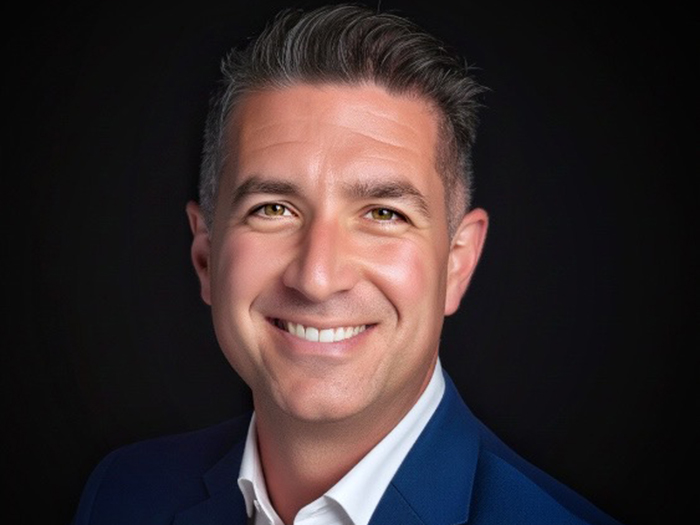Intellectual Property Is Just as Important as Your Physical Property; So Why Aren’t You Insuring It?

As rapid innovation drives the global economy, balance sheets are changing in big ways. While most businesses were comprised of hard assets just a few decades ago, many of today’s top companies hold most of their value in intangible assets.
Yet in this age of innovation, where things like patents, copyrights and trademarks are more valuable than ever, less than one-fifth of these assets are insured.
IP infringement is now a top concern for many organizations, and the lack of insurance has left a coverage differential with an average potential loss of more than $1 billion, according to one recent report.
The newness of these assets, combined with the challenges of valuing them and the lack of historical loss data, has made it difficult for insurers to keep pace.
The Evolving Asset Base
As asset bases have shifted further towards the intangible, insurance protection hasn’t remained in balance, said Lee Lewis, CEO and global head at Aon Intellectual Property.
The average organization only insures 16% of their intangible assets, compared to 60% of their property, plant and equipment (PP&E).
In 1980, top companies included giants like Exxon Mobile, General Motors and Ford — all heavy on PP&E. By contrast, many of today’s top firms are tech names like Apple, Google and Facebook.
Between 1985 and 2015, the value of the S&P 500 comprised of intangible assets grew from 32% to 84%, according to a study by Ocean Tomo.
Aon identified 35 individual intangible asset classes in eight groups, including intellectual property, B2B rights, brand, public rights, hard intangibles, data, non-revenue rights and relationships.
Intellectual property remains one of the largest and most contentious classes due to the pace of innovation. While the U.S. Patent and Trademark Office used to receive less than 100,000 utility patent applications per year in the 1980s, it now receives more than 500,000 annually.
IBM, the top patent holder in the U.S., has more than 100,000 patents and was awarded 9,100 in 2018. That same year Samsung earned more than 5,800 patents. Ford, Microsoft, Apple and LG were all awarded 2,000 each. SMBs are also landing new patents at record levels.
“The pace of innovation is growing tremendously. And we’re not even the fastest patent office on Earth anymore. It’s China and other countries,” Lewis said.
The Legal Landscape
As more innovations hit the market, the potential for litigation is rising.
Recently, Uber, Google and Microsoft even announced preemptive intentions to buy a large range of technology patents for the sole purpose of defending themselves against potential infringement suits.
But disputes aren’t only limited to tech companies. Adidas lost a bid to protect its three-stripe trademark in June 2019 when the General Court of the European Union ruled the three parallel stripes applied in any direction is not a valid trademark.
“If even Adidas can lose their trademark, it’s eye opening for a lot of companies [that] they need to make sure they are in a good position to protect their patents,” said Jason Sandler, vice president in Marsh’s U.S. Financial and Professional Practice.
The Challenge of Valuation
While organizations have traditionally looked to their GL policies to address some IP disputes, not all claims fall within the advertising injury coverage of CGL policies.
Some insurers offer “infringement liability policies” to cover third-party claims against the policyholder and “enforcement” coverage to defend their own IP rights against infringements.
“If even Adidas can lose their trademark, it’s eye opening for a lot of companies [that] they need to make sure they are in a good position to protect their patents.” — Jason Sandler, vice president, U.S. Financial and Professional Practice, Marsh.
But with the rapid growth and evolving complexity of intangible assets, the insurance market isn’t quite keeping pace, said Thomas Sheffield, SVP and head of specialty claims at QBE North America.
“There’s a dearth of coverage or not as much insurance available for these intangible assets … I think it comes down to the fact that they are difficult to value and finding what the economic loss is associated with them is tough,” Sheffield said.
Insurers that do offer IP coverage typically offer four types, including offensive, defensive, residual and contingency. Most of the market is in defensive coverage for infringements against the insured’s intellectual property as offensive claims can be rather complex.
“There just aren’t many underwriters that have acquired in-house experience in the IP space,” Sandler said.
Yet demand for intangible insurance products is rising.
Aon’s study found that between 2015 and 2019, intangible asset protection increased by 33% while PP&E asset protection increased by only 9%. Claims are also on the rise, and more than a quarter of respondents reported a material IP event in the past two years.
The Intangible Future
The good news is that the insurance industry is getting better at assessing the value of such risks, Lewis said.
Both organizations and insurers are increasing their use of data analytics to value assets and better comprehend the history of settlements and the legal environment. Increased oversight by ratings companies such as Fitch, Moody’s, and Standard & Poor are also offering more guidance, while valuation and acceptance of IP in M&A transactions will also help create a more cohesive market, Lewis said.
Insurance brokerages and risk management firms are also bringing new services, solutions and products to market. Aon launched its IP Solutions Group in 2018 and works with clients to create an IP-based value creation strategy with a range of risk management solutions to secure an IP portfolio.
In February 2019, Marsh launched IP Protect, a proprietary policy backed by Ambridge Partners. IP Protect goes beyond other offerings with broader defense coverage for losses related to copyrights, patents, trademarks and other trade secrets. The product offers more than $60 million in primary coverage from Ambridge with additional capacity available from excess insurers.
In a space with evolving risk and little historical perspective, relationships with clients and experts will be more important than ever.
“A lot of our focus has been about developing a services offering that really tries to get close with clients to understand what their needs are … It can’t just be a filed form that covers you or endorsement coverage, a lot of these things we haven’t encountered before,” Sheffield said. &












